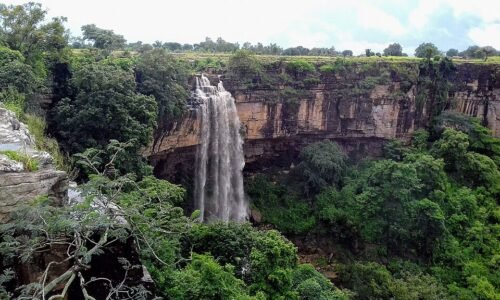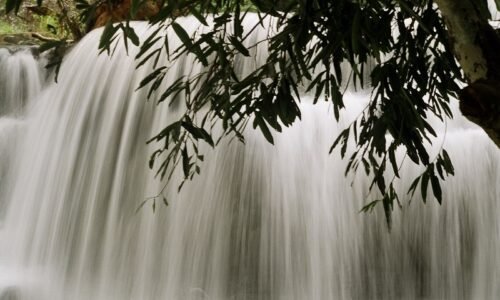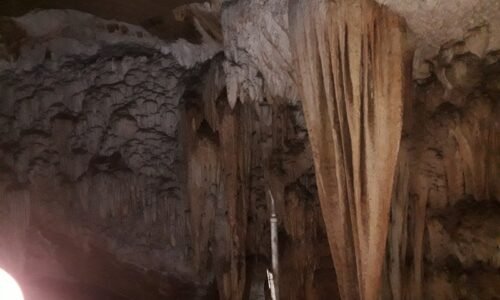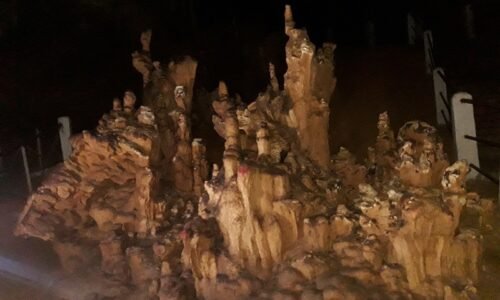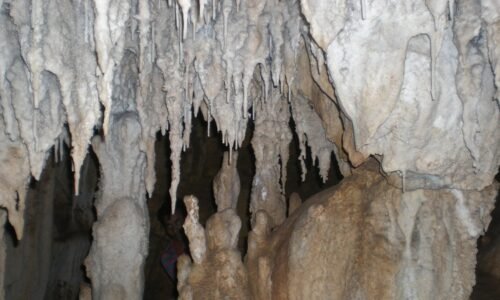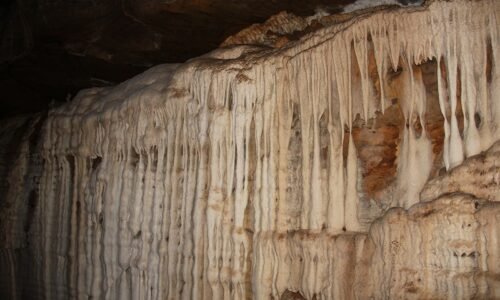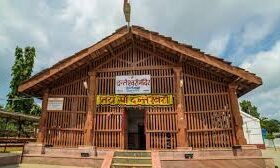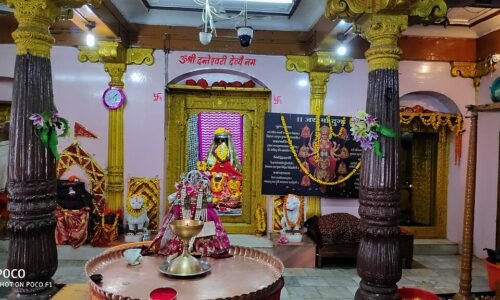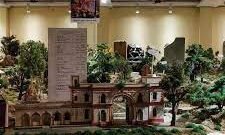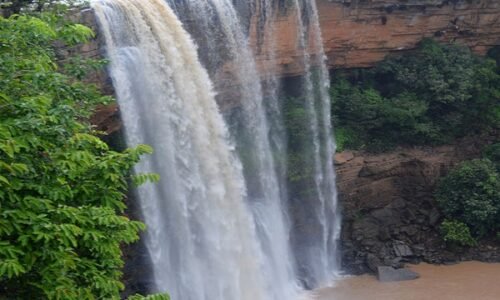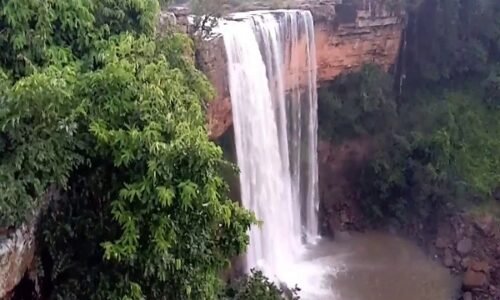No products in the cart.
A Journey to Chitrakot: Exploring Bastar’s Natural Wonder
Chhattissgarh - Beyond the Falls: Culture, Myth, and Nature at Chitrakot
Chitrakot Waterfalls: The Heartbeat of Bastar’s Wilderness
Chitrakote Waterfalls, often referred to as the “Mini Niagara of India,” proudly holds the title of the widest waterfall in the country. Located about 38 km from Jagdalpur in Bastar, it lies on the Indrāvati River. The river winds its way through dense forests before plunging nearly 95 feet, creating a spectacular horseshoe-shaped cascade. The falls are at their most breathtaking during and after the monsoon season, from July to October, when the sheer volume and force of the water create a truly mesmerizing sight.
It is believed that herds of deer once roamed the lush landscapes of Chitrakote, from which the place derives its name—’chitar’ meaning deer in the Halbi dialect. The Chitrakote Waterfall, a breathtaking display of nature’s splendor, is nestled within the majestic Vindhya ranges. Fed by the Indravati River, the waterfall plunges dramatically from a height of 100 feet, creating a mesmerizing spectacle.
Chhattisgarh was the region known as Dakshin Koshal, which finds mention in both the Ramayana and Mahabharata
By Air: From Raipur Airport: 284 kms, approx 5 hrs by Car.
By Rail: Train from Durg to Jagdalpur can be accessed. Also, Jagdalpur Station is on Kirandul-Vishakhapattnam Line.
By Road :This place is located in South of Chhattisgarh, Main City is Jagdalpur, is 284 kms, approx 5 hrs by Car. Regular buses from Raipur are accessible easily.
Tirathgarh Waterfalls
Tirathgarh Waterfalls, located within the Kanger Valley National Park in Chhattisgarh, India, is a captivating multi-tiered cascade renowned for its natural beauty and serene environment. Originating from the Munga Bahar River, the waterfall descends dramatically over sandstone formations, creating a mesmerizing display of white water amidst lush greenery. The falls have a total height of approximately 91 meters (about 300 feet), with water cascading over multiple levels, forming distinct pools that are popular for swimming and paddle boating.
Situated roughly 35 kilometers southwest of Jagdalpur, Tirathgarh Waterfalls is easily accessible to visitors. The surrounding dense forests enhance the scenic charm, making it an ideal spot for photography enthusiasts and nature lovers seeking a tranquil retreat. Additionally, the area holds cultural significance, featuring a temple dedicated to Lord Shiva and Goddess Parvati, attracting devotees and tourists alike.
The best time to visit Tirathgarh Waterfalls is between October and February when the weather is pleasant, and the water flow is substantial, offering a spectacular view of the falls in full spate.
Kanger Valley National Park
Hidden in the heart of Kanger Valley National Park lies a majestic, multi-tiered waterfall. Its gentle cascades weave through verdant foliage, painting a picture of pure serenity. A haven for photographers and nature enthusiasts seeking untouched beauty. An ideal retreat for those longing for peace amidst the wilderness.
Kutumsar Caves
Discovered during the British era and gaining prominence in the 1950s through the explorations of geography professor Dr. Shankar Tiwari, Kotumsar Cave has since attracted numerous researchers and tourists. The cave’s main tunnel is accessible via a vertical fissure in the hillside, leading to a concrete path designed for visitor convenience. Inside, the temperature remains relatively stable, averaging around 28°C (82°F), providing a comfortable environment for exploration.
Beyond its geological allure, Kotumsar Cave is of significant biological interest. It hosts unique species adapted to the dark cave environment, including the blind cavefish (Nemacheilus evezardi) and various arthropods. These discoveries have positioned Kotumsar as one of India’s most biologically explored caves.
The cave also holds cultural and religious significance. A prominent stalagmite formation within one of its chambers is revered by Hindu pilgrims, who visit to offer prayers. To preserve the delicate cave ecosystem, authorities have regulated activities such as the burning of incense and camphor, which were previously common practices among worshippers.
Access to Kotumsar Cave is facilitated through the Kanger Valley National Park. Visitors can reach the cave by traveling approximately 10 kilometers from the park’s main entrance. It’s important to note that the cave is subject to flooding during the monsoon season, typically from mid-June to mid-October, and is consequently closed to tourists during this period.
For those planning a visit, the nearest city is Jagdalpur, well-connected by road, rail, and air. The Maa Danteshwari Airport in Jagdalpur serves as the closest airport for travelers.
Bastar Palace (Jagdalpur Palace)
The palace showcases a harmonious blend of traditional and colonial architectural styles. Its facade features intricate carvings and elaborate jali work (lattice screens), with striking towers and domes that enhance its majestic presence. The central dome, in particular, offers panoramic views of the surrounding landscape.
Inside, visitors can explore opulent royal chambers adorned with exquisite furniture, beautiful paintings, and intricate decorations reflecting the luxurious lifestyle of the erstwhile royal family. A museum within the palace houses a collection of artifacts, including stunning jewelry, traditional costumes, and ancient weaponry, providing insights into Bastar’s cultural heritage.
The palace’s courtyards and gardens are meticulously landscaped, featuring lush greenery, fountains, and statues, offering a serene environment for visitors. The Bastar Palace is a significant tourist attraction, especially during the Dussehra festival when it is illuminated and becomes a focal point for celebrations
For those planning a visit, the palace is accessible via Jagdalpur, which is well-connected by road and rail. The nearest airport is Swami Vivekananda Airport in Raipur, approximately 270 kilometers away. The ideal time to explore Bastar Palace is from October to March when the weather is pleasant, enhancing the overall experience.
Danteshwari Temple
Constructed in the 14th century by the Chalukya rulers, the temple exemplifies traditional South Indian architectural style. It features a spacious courtyard surrounded by massive walls and is divided into four main sections: Garbh Griha (sanctum sanctorum), Maha Mandap, Mukhya Mandap, and Sabha Mandap. The sanctum houses a black stone idol of Goddess Danteshwari. A prominent Garuda pillar stands at the temple’s entrance, adding to its architectural grandeur.
Situated at the confluence of the Shankini and Dhankini rivers, the temple’s location enhances its serene ambiance. It serves as the epicenter for the annual Bastar Dussehra festival, a 75-day celebration that uniquely focuses on Goddess Danteshwari, unlike the traditional worship of Lord Rama in other regions. During this festival, thousands of tribal devotees from surrounding areas gather to pay homage to the goddess, and the idol is taken out in an elaborate procession, reflecting the deep cultural and spiritual connection of the local communities.
For visitors, the temple is accessible from Jagdalpur, approximately 80 kilometers away, and is well-connected by road. The ideal time to visit is during the Bastar Dussehra festival, which typically occurs between September and October, offering an immersive experience into the region’s rich traditions and devotion.
Anthropological Museum (Jagdalpur)
Visitors can explore an extensive collection that includes traditional attire, jewelry, musical instruments, weapons, masks, paintings, and handicrafts. Notably, the museum features life-sized dioramas depicting scenes from tribal life, providing an immersive experience into their customs and environments.
The museum is open from 10:00 AM to 1:30 PM and from 2:00 PM to 5:30 PM. The best time to visit is between October and February when the weather is pleasant. Jagdalpur is well-connected by road and rail, with the nearest airport located in Visakhapatnam.
For those interested in delving deeper into the rich cultural tapestry of Bastar’s tribes, the Anthropological Museum in Jagdalpur provides an invaluable and enlightening experience.
Tamda Ghumar and Mendri Ghumar Waterfalls
Tamda Ghumar Waterfall
Situated approximately 45 kilometers west of Jagdalpur, near the village of Mardum, Tamda Ghumar is a seasonal waterfall formed by the Indravati River cascading from a height of about 100 feet. The waterfall is particularly captivating during the monsoon season when the surrounding greenery is lush and the water flow is at its peak. The serene environment and scenic beauty make it an ideal spot for picnics and relaxation.
Mendri Ghumar Waterfall
Located around 44 kilometers west of Jagdalpur, Mendri Ghumar is another seasonal waterfall, often referred to as the ‘Valley of Fog’ due to the mist that envelops the area during the monsoon season. The waterfall plunges from a height of approximately 70 meters (about 230 feet) into a verdant valley, offering breathtaking views of the dense forests below. The best time to visit is during the rainy season when the waterfall is in full flow, and the surrounding landscape is vibrant and green.
Both waterfalls are in close proximity to the famous Chitrakote Falls, allowing visitors to explore multiple natural attractions in a single trip. While Tamda Ghumar is accessible via a scenic drive through rural landscapes, reaching Mendri Ghumar may involve navigating some off-road paths, making it advisable to use a vehicle suited for such terrain.
Visitors are encouraged to check local conditions and accessibility, especially during the monsoon season, as heavy rains can affect travel routes. Additionally, it’s important to respect the natural environment by avoiding littering and ensuring safety near the water bodies.



